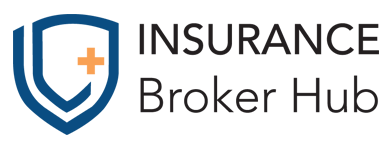Searching for health insurance is complex. During the time spent seeking out a health plan that’s right for you, you’re going to need to figure out if the health plan meets your preferred balance between monthly cost and out of pocket, provides access to the doctors you want to see, and ultimately meets your risk tolerance based on health and age.
But one of the other things you will need to look at is what prescriptions your health plan covers—and often, it’s one of the hardest things to understand. Knowing this, your prescription drug coverage can help you avoid—or expose you to unexpected costs. Not only could this affect cost, it could end up forcing you to change medicine in the event that coverage is limited.
With this being one of the less-talked about topics that could affect your healthcare costs every month, we’re going to offer you a brief primer on what a prescription drug formulary is, the different levels of tiers, and the other things to know about medicine.
The Basics: What is a Drug Formulary?
According to GoodRx, a drug formulary is a list of generic and brand name prescription drugs covered by your health plan. Created to provide a wide range of medications at a low cost to the consumer, a formulary often provides a list of accepted medications for each condition and the amount you will pay.
Depending on the condition and drug, this often results in consumers seeing copay numbers like $0, $5, or $10, a percentage of the cost for brand-name drugs, or the full price in the event that a specific medication is not covered.
A System of Tiers
Though this may sound simple, formularies are also divided into tiers of medications.
Depending on your plan, the number of tiers may vary, with some broken into two tiers (preferred and non-preferred) and others having three. However, many have four tiers and in essence, these determine the difference in your out of pocket costs, with tier 1 drugs often costing the least and tier 4 representing specialty drugs and presenting the highest out of pocket costs.
- Tier 1: Providing the lowest copays, these are generally generic drugs with a variety of providers. For example, a tier 1 medication will have a $5 or $10 co-pay.
- Tier 2: Often including preferred brands and non-preferred generics, these will cost you a bit more to purchase than tier 1 medications, possibly $40 or $50.
- Tier 3: Tier 3 includes generics, preferred brands, and non-preferred brands. Your out-of-pocket price for these drugs will be higher than tiers 1 and 2. Your health plan may place a drug in tier 3 if it’s new or if there’s a similar drug on a lower tier. In the event that drugs in tiers 1 and 2 aren’t effective, prescriptions in tier 3 are used, potentially resulting in you paying for 20% out of pocket.
- Tier 4: Often a limited category that includes specialty medications focused on rare or serious medical conditions, these will leave you paying the most out of pocket.
Why Do Formularies Exist?
The formulary is created to help you get the most cost effective medication. With insurers looking to minimize the costs across populations, insurance companies have pharmacy benefit managers to oversee the formulary and determine the most effective, widely used, and cost effective medication for an illness.
Often, a pharmacy benefit manager will determine that for condition X, there are a number of medications that have the same function and are equally effective, but one costs more than the other. To provide the most benefit to the population of insured individuals, it makes more financial sense to prefer the cheaper medication in those cases.
But this also creates a problem—what happens when a doctor prescribes you something that isn’t included in a formulary? For example, antidepressants, birth control, and some pain medications will end up getting prescribed—only to result in unexpected costs for the consumer.
Polyclinic notes that since your doctor is the one prescribing it, he or she may not understand the price of the medication. With the insurer paying the biggest portion of the medication, their goal is to provide you with a scientifically backed medication that costs the least for all parties involved.
When Things Don’t Work: Prior Authorization
With many different medications available for many different conditions, what happens if the medication you need isn’t one that works? Maybe you’re allergic to a specific antibiotic or painkiller, maybe your doctor feels that there’s a specific medication that will reduce risks or side effects, or maybe a medication on the formulary isn’t effective.
In these events, a doctor’s orders may be best—but to get this approved at a cost affordable to you, the doctor will need to complete a prior authorization. As noted by Polyclinic,
“A prior authorization is a review process that requires your doctor’s office to submit paperwork explaining why you need a specific medication when others are available. The insurance company decides if a prior authorization is needed. Usually a prior authorization is prompted when the pharmacy tries to bill for the medication and the bill is rejected, requiring a prior authorization.”
How Do I Find My Formulary?
When looking at your current or potential health plan, you can generally find it online on your health insurer’s website or within your health insurance welcome packet.
- Health Insurer’s Website: Often the easiest place to find your formulary, you can look up your formulary with insurance card in hand.
- Welcome Packet: If it’s not available online, check your insurer’s welcome packet.
Ask Questions, Get Answers
Understandably, the concept of a formulary often doesn’t mean a lot unless you have a specific condition or have found that a specific medicine doesn’t work for you. Most medications will be included, though it’s important to know whether they are covered before you buy.
To get the best coverage at the best price, you’re going to want to work with someone who has the knowledge to guide you through the decision process to get you the most bang for your buck—and that’s where we come in.
Our free service gives you access to an independent network of national brokers who have the experience and expertise to design a plan around your needs and budget. Our network of brokers will tailor a complete solution for your health coverage needs.
Ready to get started? Simply request a no obligation health insurance quote here.
Additional Health Insurance Resources
Health Insurance Basics: Maximum Out of Pocket Expenses


